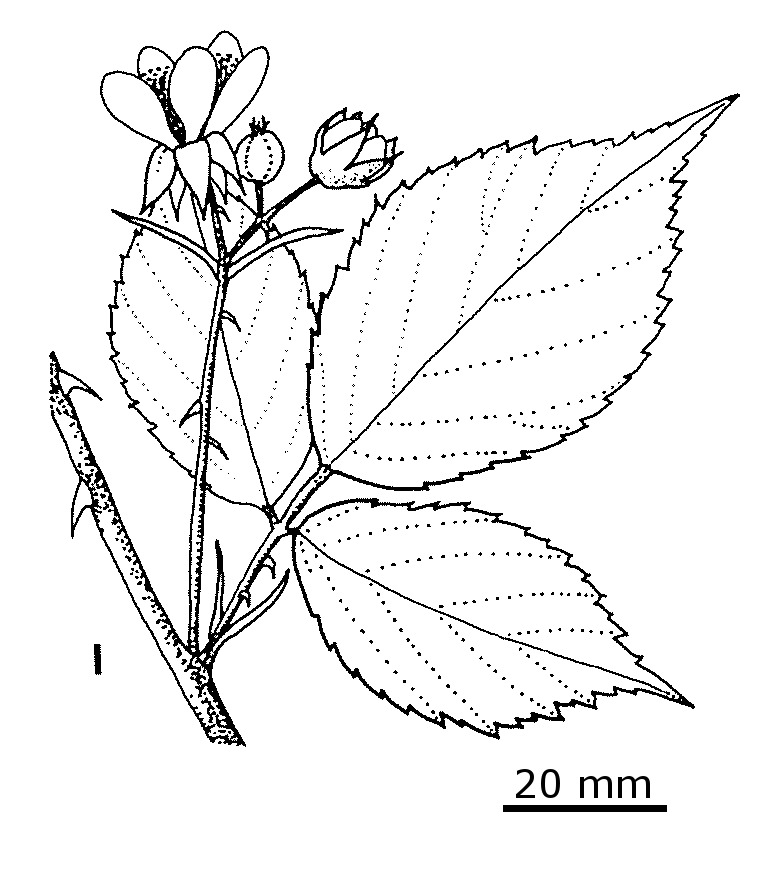Rubus anglocandicans
A.NewtonRobust scrambling semi-deciduous shrub; stems arching, to c. 4 m long, angular, faces concave or flat, glaucescent, glabrescent, brown to purplish; prickles more or less equal, straight or falcate, mainly on the angles, to c. 8 mm long. Leaves 3- or 5-foliate; leaflets obovate, elliptic or broadly elliptic, mostly 3–11 cm long, 2–7 cm wide, base rounded to cuneate or truncate, margins sharply toothed, upper surface green, glabrescent, lower surface white- or grey-tomentose and sparsely pilose; stipules linear, pilose. Flowers in long, lax, terminal, narrow-pyramidal racemes; axis and peduncles tomentose and pilose, eglandular. Sepals white- or grey-tomentose, acicular, unarmed, reflexed in fruit; petals ovate to suborbicular, pink or white; stamens much exceeding styles. Fruiting head more or less globose, c. 15 mm diam.; fruit glabrescent, black, not falling from receptacle when ripe. Flowers summer.
Wim, GleP, VVP, VRiv, MuF, GipP, OtP, WaP, Gold, CVU, GGr, DunT, NIS, EGL, EGU, WPro, HSF, HNF, OtR, Strz, MonT, HFE, VAlp. WA, SA, Qld, NSW, ACT, Tas, Norfolk Is. Apparently the most widespread blackberry in the state but poorly collected and its exact distribution not certain. Usually found in moist riparian or other mesic habitats, but also a common weed of farmland.
Rubus anglocandicans is generally distinguished by the high arching, glabrous stems that lack a whitish scaly covering.
This species was previously thought to hybridise with Rubus ulmifolius. However, limits of both species, along with many taxa in the Rubus fruiticosus species-aggregate have been revised since the last Flora of Victoria account. See note under R. ulmifolius.
Jeanes, J.A.; Jobson, P.C. (1996). Rosaceae. In: Walsh, N.G.; Entwisle, T.J., Flora of Victoria Vol. 3, Dicotyledons Winteraceae to Myrtaceae, pp. 556–585. Inkata Press, Melbourne.
 Spinning
SpinningEvans, J.K.; Symon, D.E.; Whalen, M.A.; Hosking, J.R.; Barker, R.M.; Oliver, J.A. (2007). Systematics of the Rubus fruticosus aggregate (Rosaceae) and oher exotic Rubus taxa in Australia. Australian Systematic Botany 20: 187–251.




